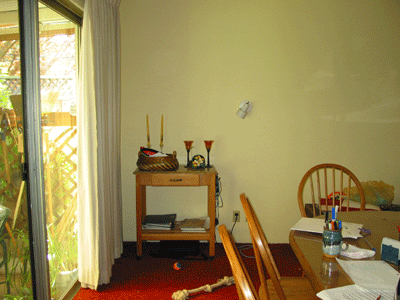
Choosing the Right Digital Camera
Digital Camera Considerations
Brand
There are many brands of digital cameras available. However, in general the best quality cameras seem to be made by traditional camera manufacturers. While other manufacturers — Panasonic, Sony, GE, Casio — make fine digital cameras and have a long history of building quality electronics, the traditional camera makers — Kodak, Nikon, Olympus, Canon, Minolta — have the expertise to produce the best optics; and this is often where the biggest difference between cameras is found.
Battery Life
Digital cameras are infamous for their power consumption. Many people buy a digital camera and then become frustrated when their batteries fail in the midst of an event. For this reason it is important to know the capacity of your camera's battery life, preferably before you purchase and, if necessary, make allowances for it.
Some digital cameras use standard AA batteries; others come with a special rechargeable battery, although you can purchase replacement batteries if you wish.
Battery life under typical conditions varies greatly — from as little as 1-1/2 hours to over 6 hours. The average camera will run for around 2-1/2 hours on a full charge. It is advisable to always carry a backup battery if you are at all unsure as to the length of time you will be using your camera, or uncertain how much charge is left in your camera's batteries.
It is also good to be aware that batteries perform more poorly in cold conditions. Don't be surprised if a battery that normally lasts you 2 hours lasts less than half that in cold conditions, so plan accordingly.Optical Zoom
Don't confuse optical zoom with digital zoom. Optical zoom is the amount of zoom achieved through the lens system. This generally ranges from 1x (i.e., no zoom) up to 12x. Digital zoom is basically a marketing ploy. It simply takes the best optical image available and enlarges each pixel so that the image seems to be zoomed. In reality you are just cropping your image and making it more pixilated (or grainier). I recommend always turning the digital zoom off and performing any digital manipulation in a quality photo or image software program, such as Photoshop. Generally speaking, the higher the optical zoom the better. A typical digital camera will have an optical zoom of 3-4x, which is adequate. You can see from these photos what a difference an optical zoom makes:
Comparison of Digital and Optical Zoom
These photos demonstrate the difference between optical and digital zoom. You can see how the camera with the 10x optical zoom is able to capture much more detail because optically, the camera can picture the true image. Using a camera with only a 3x optical zoom, the 10x total zoom uses another 3x of digital enhancement, which is to say that the camera captures a 3x optical image and enlarges each pixel by a factor of 3 to create the 10x total zoom.
Resolution
A pixel is a single colored point in a picture. Usually each point can hold a range of 256 different shades of red, green, or blue. Together, these three basic colors can make up over 16 million different colors. Arranged in rows and columns, these points — or pixels — combine to create an image, in much the same way as a television or computer screen does.
Here I have a picture that is approximately 4 by 6 inches in size, at a resolution of 350 pixels per inch and below I have enlarged the boxed area to demonstrate the effect that resolution has on the clarity of your printed picture. You will notice that above 250 dpi there is little difference in clarity, but that difference becomes quickly apparent as you drop below the 175 dpi mark.
Resolution Comparison Resolution 1/2 Enlargement
Camera resolution is typically measured in millions of pixels — or megapixels. In general, the more pixels a digital picture can contain, the higher the price of the camera.
What size provides the proper trade-off between resolution and price? Much of this depends on the use that you intend to put your camera to.
Internet and e-mail images are typically viewed on-screen at a resolution of 72 dpi (dots per inch). Most any camera will be able to support this resolution without a problem.
When you go to print your picture however, the quality of the printing is largely dependent upon the density of the pixels in the photo, i.e., how many pixels per inch are printed. The more pixels per inch, the finer the resolution of the photograph.
Digital Camera Resolution Chart
Printing Pixels Per Inch (PPI)Camera
Resolution
(Megapixels)Photo
Dimensions
(pixels)Photo Size 3 x 5 4 x 6 5 x 7 8 x 10 11 x 14 16 x 20 0.8 1024 x 768 205 171 146 96 70 48 1.8 1600 x 1200 320 267 229 150 109 75 3.0 2048 x 1536 410 341 293 192 140 96 3.7 2272 x 1704 454 379 325 213 155 107 4.8 2592 x 1944 518 432 370 243 177 122 5.7 2832 x 2128 566 472 405 266 193 133
Unacceptable <75 ppi Poor 75-125 ppi Acceptable 125-175 ppi Good 175-250 Very Good 250-350 ppi Excellent >350 ppi Generally speaking, printed pictures having a resolution less than 75 dpi tend to look too grainy. For art-quality photos, examinable at close range, you would like to have a pixel density of 220-300 dpi or even higher.
Sensor Size
One area that garners very little attention is the size of the sensor that captures the image. So much emphasis is put on pixel count that most people are unaware that the size of the sensor is nearly as important!
It turns out that the size of the individual light receptor has a very large impact on the capabilities of the camera. Small receptors (around 3 microns in size) naturally capture fine details but, since they are so small, they are also less sensitive to light; they capture fewer photons (light particles). The result is less dynamic range (fewer f-stops), and lower ISO capabilities. Their size also makes them susceptible to chromatic abberrations (chromatic or purple fringing). Larger receptors (6+ microns in size) are somewhat less sharp at capturing the image but, due to their larger size, require less light to operate, so they have a larger dynamic range and can operate at higher ISO ratings before noise becomes a problem. Unfortunately, these larger image sensors are correspondingly more expensive to produce, since fewer of them can be created at a time. This is one reason why the higher quality cameras are so expensive.
The optimum receptor size seems to be in the 6-9 micron range. This is a receptor that is large enough to capture dim light without background noise, yet small enough to retain the necessary sharpness of an image.
To determine the receptor size of a camera, find the width of the image sensor and divide by the maximum horizontal resolution that the camera allows.
For example, the Canon G3 has an image sensor size of 7.18 x 5.32 mm. with a maximum image size of 2272 x 1704 pixels. Divide the 7.18 millimeter width by 2272 pixels and you will find that the Canon G3 has an individual receptor size of 3.16 microns - less than ideal, but better than many compact digital cameras.My Choice — The Canon G3
The Canon G3 is my current camera of choice because it combines excellent image quality, great battery life, and full-feature availability in a moderately priced package of around $300 (used). It is no longer under production, but you can obtain an excellent value by purchasing one used.
The camera has a small sensor, but is produces images that are sharp and with good color.
Some of the notable features of the Canon G3 are:
- A swing-out, twistable LCD display on the back of the camera. This allows you to position the camera wherever you wish for the best shot possible, while still being able to line up the shot even if the camera is flat on the ground or above your head! This is one feature that I am loath to be without because it is so versatile. In fact, I would go so far as to say that I would not purchase another camera that did not have this feature!
- An optical viewfinder that saves battery life and is useful for when you are trying to catch fast-changing scenes in strong light.
- Battery life of over 3-1/2 hours — better than 80% of cameras tested and nearly 40% longer than the average.
- 4x optical zoom, which is about average for digital cameras, although the latest generation have very tempting optical zoom factors of up to 12x!
More Information
Check out the full Canon G3 review and many other digital cameras objectively reviewed at Digital Photography Review.
Another source worth checking out is the Digital Camera Buying Guide.











